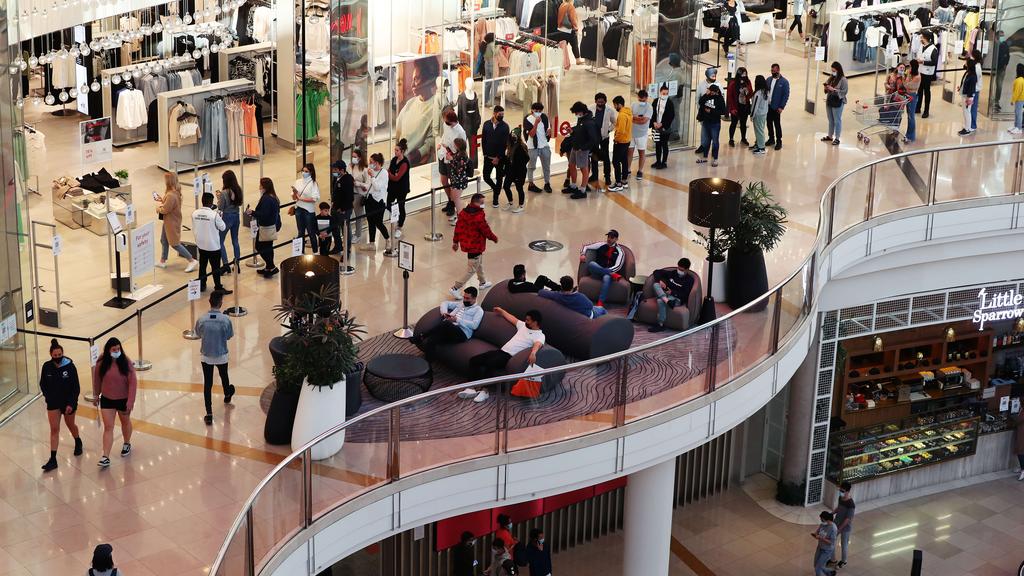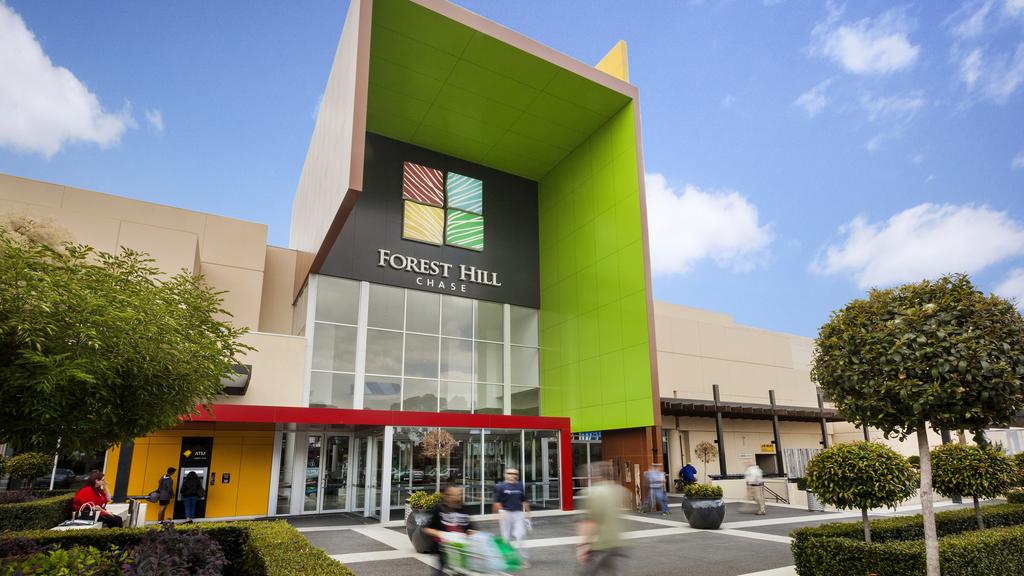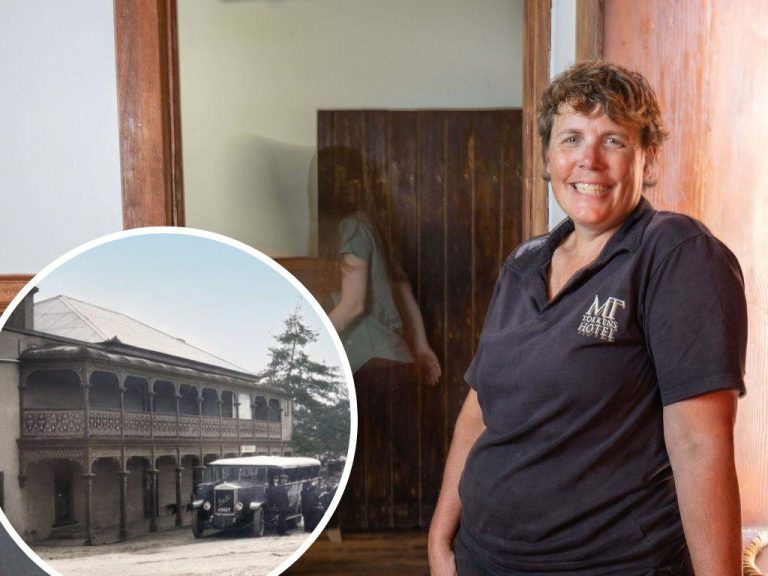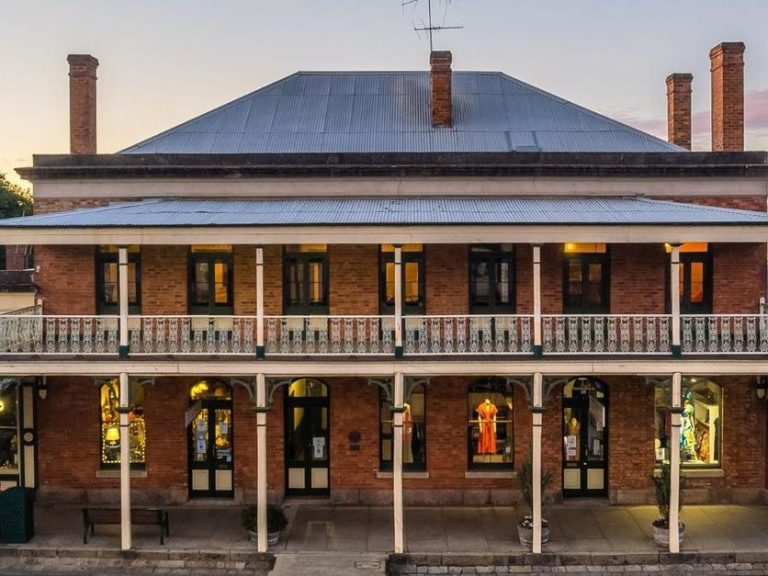Property reset: Honeymoon for malls is over as retail shifts gear

Busy scenes at Chadstone Shopping Centre in Melbourne. Picture: Rebecca Michael
Retail landlords are bullish about the recovery from the pandemic but the outlook could prove more challenging.
A combination of high interest rates, global instability and weak consumer confidence is proving a complex cocktail for retail landlords. The pressure is on at the big end with the value of the country’s largest malls still untested in the wake of the pandemic. But trading remains active at the smaller end and malls once viewed as being caught in the middle are faring well.
Top landlords say that their operations have been revamped and they are drawing a new breed of customer as well as pushing into new leisure markets and making development plays. But a split is emerging as to just how the industry will fare after the honeymoon period of the post lockdown bounce fades away.
Scentre chief executive Elliott Rusanow cited the influence of high employment and the expected end of the interest rate cycle on retail property at a major industry event.
“The reality is that the Australian economy is incredibly robust – and it’s robust from a consumption point of view because of that level of employment,” Mr Rusanow said.
He noted customers had adapted to the new realities when shopping.
“Covid may not necessarily be over, but I think that the community has learned to live with it. And they’ll probably learn to live with many other things in the future.”
After a strong start to the year, Mr Rusanow said that retailers were benefiting from higher productivity and that the $300bn in savings added during the pandemic were now being spent in centres.
Board director Susan MacDonald, whose non-executive portfolio includes Cbus Property and QIC – was more cautious at the The Shopping Centre News Big Guns event.
“I feel that there are definitely storm clouds there,” she said. “When you look at debt markets, you look at some of the global banks and what’s happened there.”
“Previously in global downturns, Australia has had a level of resilience and I definitely hope that resilience continues … mindful of the fact that we do have that big cliff coming with fixed mortgages.”

The recently acquired Forest Hill Chase Shopping Centre in Melbourne’s eastern suburbs.
GPT Group head of retail and mixed-use Chris Barnett was more positive about the outlook and played down the impact of interest rate hikes as not all customers held mortgages.
“I get the blunt instrument piece of interest rate increases, but it does only affect less than 40 per cent of Australian consumers,” he said.
Mr Barnett pointed to the higher margins retailers were reaping and their capacity to pass on prices to consumers. “Their net margins are as strong as they have ever been,” he said, saying that growth would moderate. “We see it as a tapering, we certainly don’t see it as a cliff.”
Newly-installed Vicinity Centre chief Peter Huddle cited the unique conditions. “I think there is a bit of a honeymoon period,” he said, citing low interest rates, cheap money and the diversion to retail from international travel.
He said that household savings has been coming down significantly and noted housing was getting harder.
“What we look at really is the delinquency rates, particularly in low to middle socio demographic areas around residential mortgages and that normally has a straight correlation to retail spending,” Mr Huddle said.
“I think it’s going to just bifurcate – interest rates (are) blunt instruments,” he said, with a clearer picture to emerge in the final quarter. “That will be the determiner particularly if interest rates continue to rise.”
Macquarie analysts this week pointed to signs of softening in large retail centres but said that convenience remained solid.
Recent updates from retail real estate investment trusts pointed to a continued recovery in leasing conditions, however, following several periods of broadly unchanged growth, regional rents moderated 0.3 per cent quarter-on-quarter across Australia with Melbourne and Sydney both down 0.5 per cent.
“Given our expectation for softening retail spend through 2023, we believe retailer sales and thus leasing outcomes will begin to weaken for large retail landlords,” Macquarie said.
They said that rents in subregional centres saw an acceleration of growth while neighbourhood and large format retail centres performed strongly.
Centres are trading, albeit on new metrics.
Property funds house Haben picked up the Forest Hill Chase Shopping Centre in Melbourne’s eastern suburbs for $256.5m.
IP Generation bought a 50 per cent stake in WA’s Rockingham Centre for $180m and is also finalising its $300m purchase of Craigieburn Central in Melbourne.
The attitude of lenders could be critical. They see retail as the riskiest of core commercial real estate sectors as debt costs rise, according to data from MSCI Real Assets.
The sharp increase in the cost of debt, propelled by the RBA’s ten straight cash rate hikes, was behind the slowdown in transactions. Some sectors are still perceived riskier.
The average cost of debt for retail specialist funds surged to 8.3 per cent in the fourth quarter of 2022, from 2.6 per cent a year earlier, MSCI said. This was the highest level since 2015, and compared with 5.8 per cent for office funds and 4 per cent for industrial funds.
MSCI head of Pacific real assets research Benjamin Martin-Henry said that given the economic outlook, concern over the retail sector’s performance in the short-term was understandable.
“After all, the main aim of the central bank’s tightening is to reduce consumer spending to bring inflation down from levels not seen since the late 1980s. A decrease in disposable income will impact retail sales across all property subtypes. But the hardest hit asset types are likely to be those with a higher proportion of sales generated by discretionary spending,” he said.

After a strong start to the year, retailers are benefiting from higher productivity and the $300bn in savings added during the pandemic are now being spent in centres. Picture: Jake Nowakowski
Mr Martin-Henry said that the retail sector suffered a significant downturn in performance at the onset of Covid-19, due chiefly to writedowns in values, and so far it had not recouped those losses. “In light of these declines in value, it would not be a surprise to see well-capitalised investors who aren’t reliant on debt turn their attention to retail assets as some current owners face the pressure of refinancing at higher rates,” he said.
But market players say retail is still holding up.
JLL head of capital markets research Andrew Quillfeldt said that underlying asset performance in retail had been very positive over the past two years. He cited strong retail sales growth, which was now 27 per cent above pre-pandemic levels, combined with a resetting of rents, as improving occupancy cost ratios across the retail sector.
“Income sustainability was the major concern towards retail pre-pandemic, but that concern has abated considerably given the movement in both those key metrics. Market fundamentals will be well supported over the medium to long-term by very limited new supply and population growth of 13-15 per cent over the next decade,” Mr Quillfeldt said.
He said retail was now viewed as one of the most resilient sectors by capital given the higher starting point for yields relative to other sectors and the de-risking of valuations that has taken place since 2020.
“Despite the discretionary spending slowdown expected from the second half of 2023, there is an identified value proposition in retail, in an environment where investors are seeking yield, and there is a clear opportunity to add value through the development of additional uses on the sites,” he said.
JLL Debt Advisory’s Josh Erez said that well located assets, supported by strong local demographics, with resilient income profiles underpinned by a quality mix of national anchor tenants like Woolworths, Coles and Kmart attracted good liquidity and competition from lenders.
“Pricing evidence we have observed suggests average margins for these types of stabilised investment retail assets have maintained their slight historical premium to more sought after asset classes like industrial and logistics. We have certainly not observed a blowout in margin spreads,” he said.
Mr Erez said both major and second tier banks were “open for business” on retail assets, and were chasing urban infill assets in core markets, non-discretionary, large format, fuel and fast food anchored or even large regional shopping centres.
High street, fashion or discretionary based retail assets are probably the only retail sub-sector assets that may be experiencing a lack of appetite from banks, he said.
The big retail test may be yet to come.







